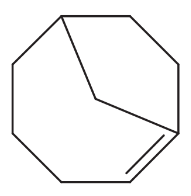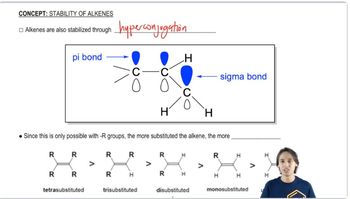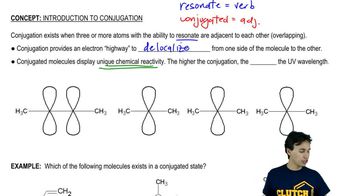Of the compounds you named in Problem 45:
a. Which is the most stable?
a.
b.
c.
d.
e.
f.


 Verified step by step guidance
Verified step by step guidance Verified video answer for a similar problem:
Verified video answer for a similar problem:



 4:28m
4:28mMaster Understanding trends of alkene stability. with a bite sized video explanation from Johnny
Start learning